My name is Heather Larkin, and I am a photographer in Athens, Georgia. I own Fairyography and I specialize in magical photos of ladies of all ages. Before I started my photography business, I went to school for Early Childhood Education, with a focus on kids with Special Needs. I taught Pre-K for a while, but my immune system couldn’t keep up. When I left school, I wanted to keep those special kids in my life and business.
In 2007, I heard through my community of an eight-year-old named Sabina. She had a malignant brain stem tumor. I knew nothing else about her condition. I automatically thought she’d be going through chemotherapy for treatment, so I knew that I wanted to do a magical photo session for her before she lost her hair. I just wanted to encourage her and to help her feel pretty as she was going through such harsh treatment.
I met with Sabina and her mother in November 2007, and dressed her up in all the fancy clothes I had at the time. It was an amazing, fun session. Only one eye turning in because of brain stem pressure gave any indication she was sick at all. I felt on top of the world after that session. She was happy and bouncy, and I never really felt like she was all that sick. I was wrong. She couldn’t go through chemo and the tumor was inoperable because of where it was located. By February, she couldn’t walk. By May, she was gone. I was utterly crushed. I felt like something bright and magical had been taken from the world, even though I’d met her just twice. Even now, 12 years later, I still get teary thinking about her.
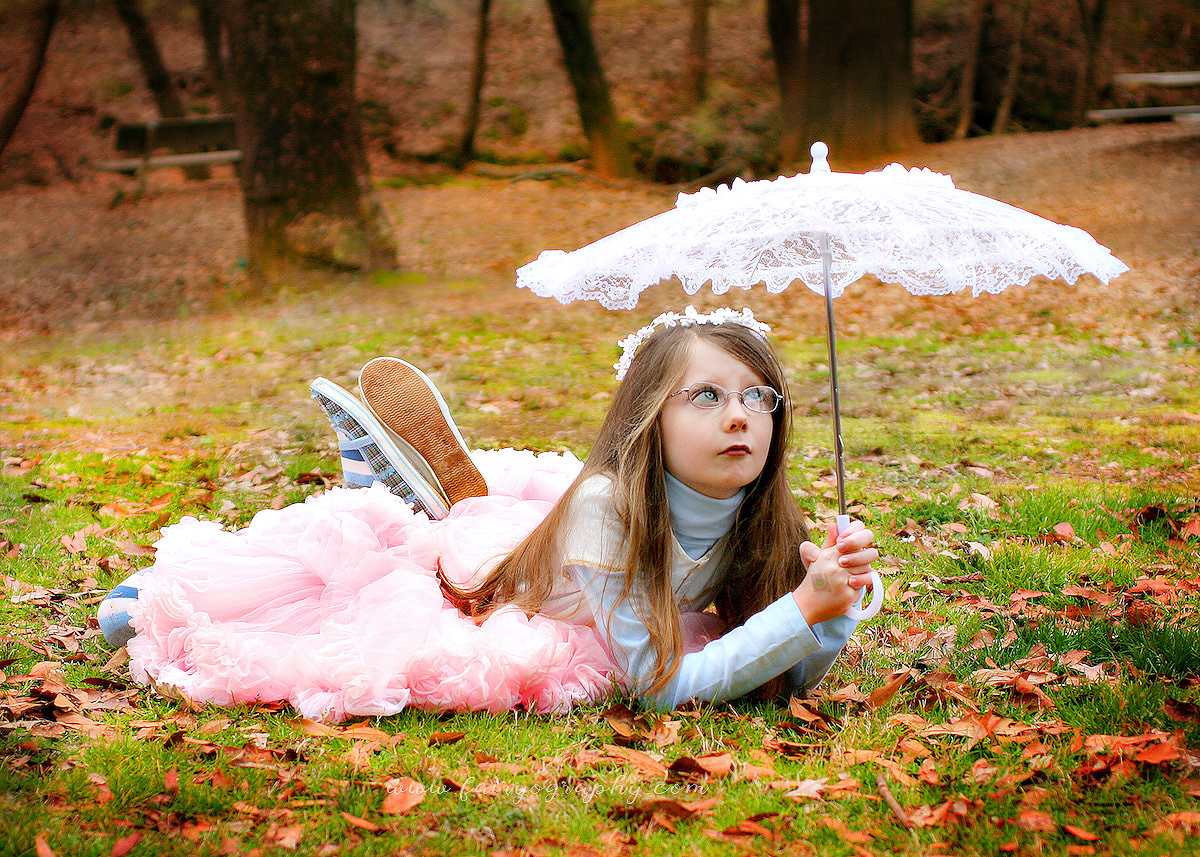
A few years later, I thought I’d like to have a contest to nominate another deserving girl for a similar session. It was going to be just a one-time thing. The local community nominated a few girls. The girl I picked that year was Ava Jane. She was born with a heart defect. I did a session for her and her two older sisters in fluffy pink princess dresses. I got some really gorgeous photos of her and her sisters. Again, it never crossed my mind that she was in any danger. Just a few months after that session, Ava’s heart gave out suddenly and her family lost her too.

Both Sabina and Ava Jane’s mothers said to me, “You will never, ever know how much those photos mean to our family.” After that, I knew I had to keep going with this event. Even if the kids aren’t terminal, the families have spent so much on medical bills that they haven’t had many photos done. So the Sabina and Ava Jane Memorial Princess sessions were born, and each year I accept nominations for deserving girls to have a magical photo shoot. I offer sessions to each of the families nominated because I don’t want to pick just one kid. At the time of this article (November 2020), I have been running this event for 11 years.
Of course, while costumes, backgrounds and props are all important elements of these sessions, as a professional photographer, gear choice is important, too. I currently only use SIGMA prime (single focal length) lenses, and in this article, I’d like to give you an overview of why I picked the lenses I used for each of these images, based on the specific needs of each child, and the story I want to tell at the time.
85mm F1.4 DG DN | Art

This “studio” session is actually outside! I hung this backdrop outdoors on the side of a building to shield it from the wind. Since I was outside and could back up far enough, I decided to see how an 85mm F1.4 lens would do. This lovely girl is a brain cancer survivor at 16 years old. Her tumor and surgeries actually have paralyzed her from the neck down, which may or may not be permanent.
When I asked her about what she wanted for her fairytale photos, she asked to be a mermaid. I had a tail and fin in her size already, and I grabbed this backdrop because the colors fit. The jellyfish is actually a leftover Halloween costume I wore a few years prior. We had a great time singing songs from The Little Mermaid (I know all the words because I’m a nutcase!).

This girl was born with a mitochondrial disease that causes her body to not convert fat to energy. As a result, ensuring that she eats the proper food is necessary and her diet is extremely restricted. She has also suffered from seizures for many years, and due to her disorder, she has experienced other developmental delays.
She’s wearing glasses, and since farsightedness is much less common in kids, I can assume she’s nearsighted and I need to be closer to her, making an 85mm lens a good choice. I also wanted to include the lantana flowers around her, but keep them slightly out of focus so as not to distract from her. But the best thing about this session was how wholeheartedly she believes in fairies, so we spent the entire two hours talking about how to bake cookies that fairies will like. Her mother said she begged at home to make thumbprint cookies for the fairies after these photos.

This sweetie is bipolar and has ADHD. ADHD isn’t all that uncommon, and I’ve worked with many kids dealing with it. But her bipolar diagnosis means that she experiences incredibly high highs and very low lows. If she’s low enough, she tears out her hair and hits people. It’s very hard for her to manage her big emotions, and harder still for the kids around her to understand her, so she doesn’t make friends easily. Apparently, her family has been fired by other photographers a few times because of her over-boisterous manners. I didn’t really notice anything that difficult, though. For our session, she was hilarious and bouncy. I very much enjoyed my time with her. Her sister loves her to bits as well.
She’s very wiggly, so I decided to hem her in a little and give her something to do. So I picked a spot were we would be surrounded by grass, and going around me would be the only way out. I asked her to smell the flowers, then started asking her a bunch of questions so she’d look right at me. I picked the 85mm again for this portrait because I wanted to focus on her eyes beyond her glasses, but not the grasses all around her.

Since I’m six feet tall, one of my favorite things to do is to sit a girl on a wall and stand beside her and have her look up at me, while I get a bit of an angled downward shot. I’m not tall enough to do this with a longer focal length, but the 85mm manages it beautifully (if you’re not six feet tall, try this with a 50mm instead).
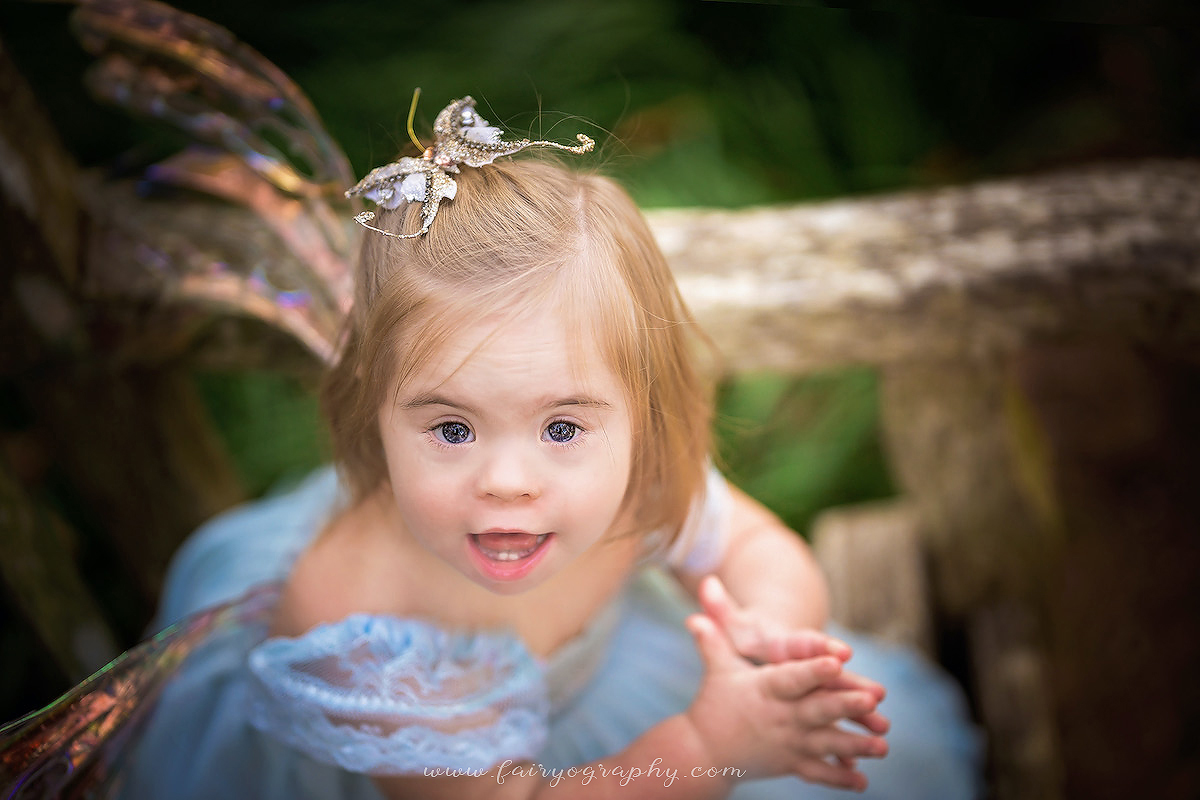
At F1.4, the resulting shots are always focused right on the eyes with beautiful falloff everywhere else. This is especially amazing with kids with Down syndrome (see above) since a lot of them have little white starbursts in their eyes.
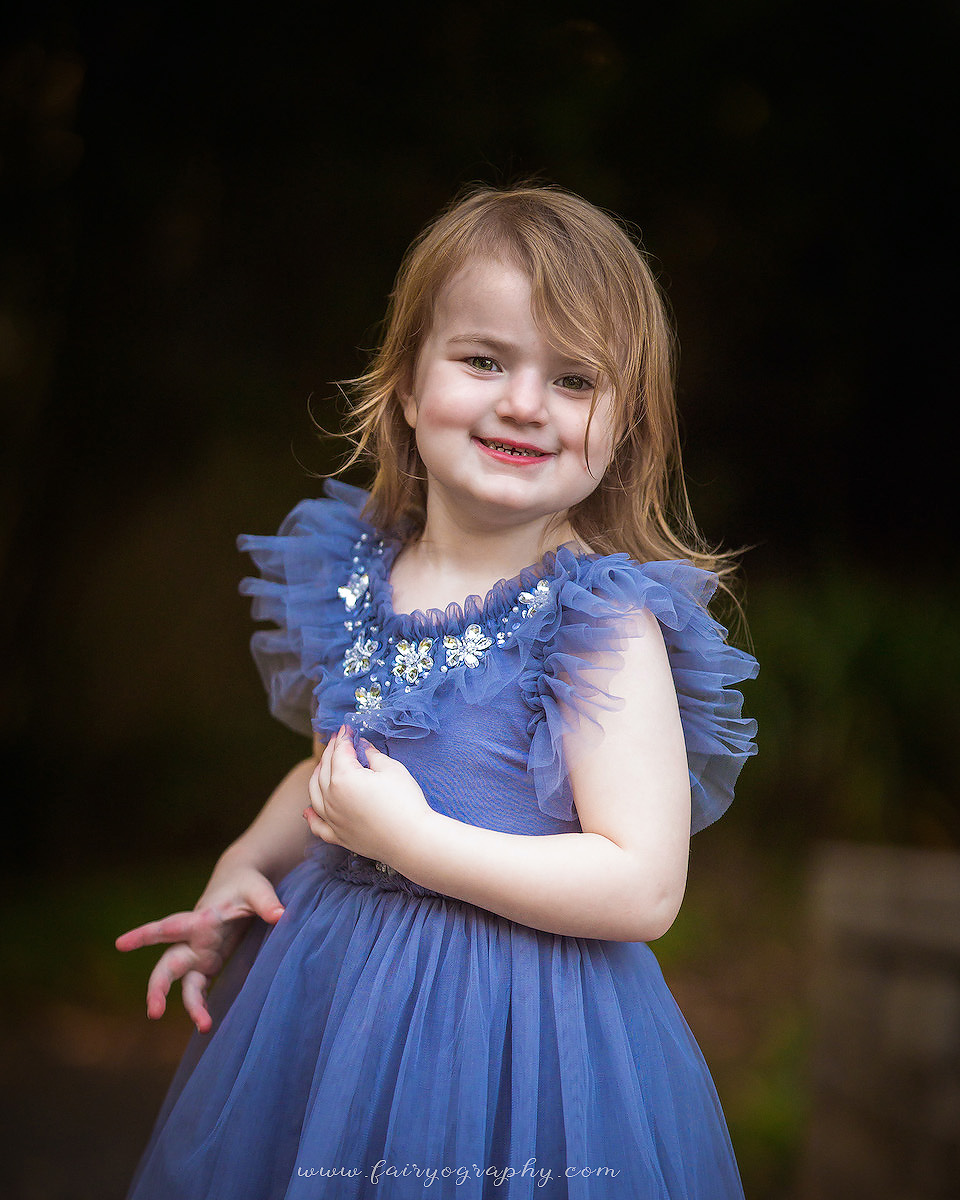
The little girl pictured here has many things on her diagnosis cards, but one of them is autism. She doesn’t slow down, and she punctuates her emotions with arm flapping and happy yelling. She LOVES water, so this smile wasn’t because of anything I did, but she was yelling at the fountain and wanted to include me in her joy.
Normally with autism, I’d want to back up more and give her space because most autistic kids need you to back up and stay out of their faces. This girl, however, is more attached to people than most kids with autism. For this shot, I swapped from the 105mm to the 85mm because she got upset when I backed up enough for a full body photo with the 105mm.
105mm F1.4 DG HSM | Art

This perfect angel has Down syndrome. She is also one the the unlucky kids to have had leukemia, BUT in an odd twist, most of the kids that get that leukemia and also have Down syndrome are more likely to survive than the kids without Down syndrome. She is a very, very active kid and has a great sense of humor, so I just let her go.
I used the 105mmm lens for this session because I wanted nice bokeh in the trees to keep it from being too busy, but I also wanted to be able to give her space to just run without me having to be right on top of her. As the sun set that evening, I told her to run up towards the top of the hill and then stop and twirl in her dress.

This girl is a pretty classic example of having non-verbal autism. She understands everything said around her, loves music and her family, but too much happening all at once can become difficult.
She didn’t want people in her face, so I made sure I had my 105mm to let me be far enough back that she didn’t get overwhelmed and anxious. I was close enough to speak to her without shouting, but far enough away to get amazing bokeh and light without freaking her out. SIGMA’s 105mm F1.4 does backlighting like no other lens I’ve ever shot with. It’s utterly magical every time.
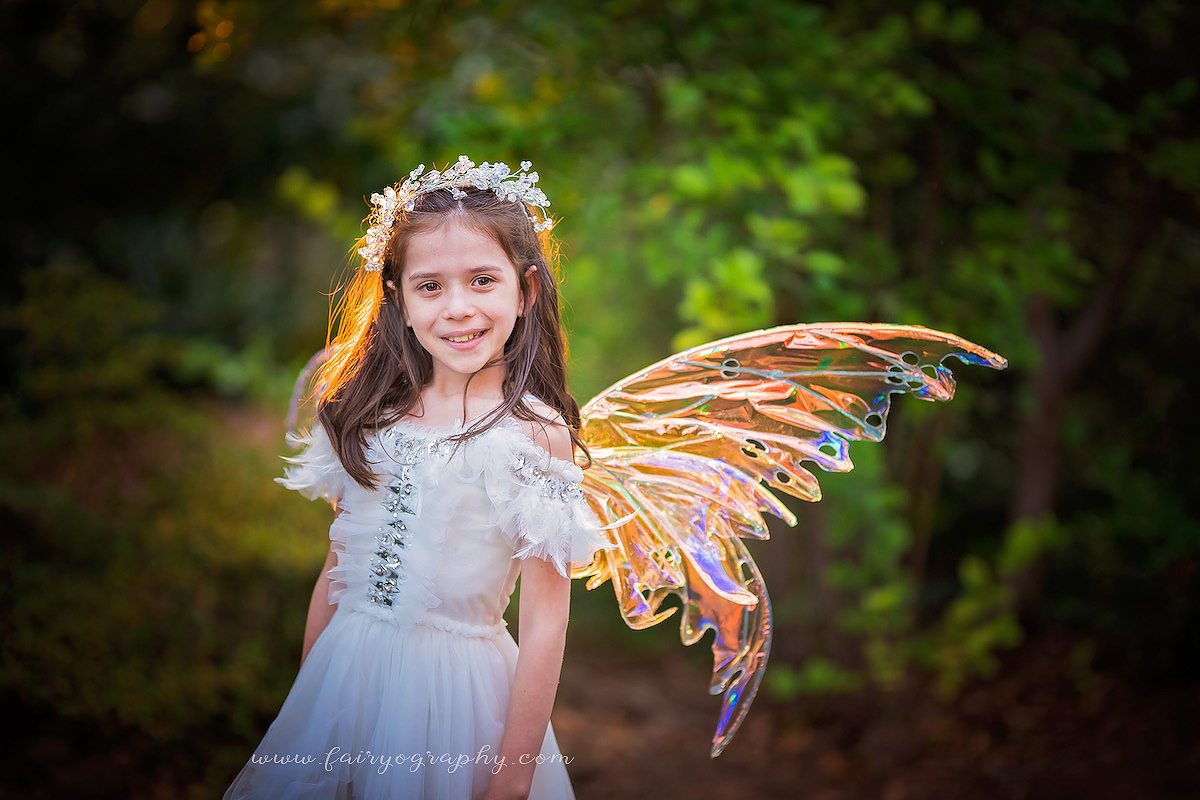
This little pixie has neurofibromatosis. It is a genetic disorder that causes tumors to form on nerve tissue. These tumors can develop anywhere in the nervous system, including the brain, spinal cord and nerves. In addition to this, she is dyslexic. At eight years old when these photos were taken, she had JUST learned how to read. This has caused a lot of problems at school with delayed learning, but also bullying.
Another example of magical backlighting. I know that this lens is stunning with the sun directly behind the subject, so I placed her right in the middle of a sunbeam. I wanted it to light up her hair and wings, but not blow out her white dress, so I made sure I had backed up far enough to get her at just the front edge of it.
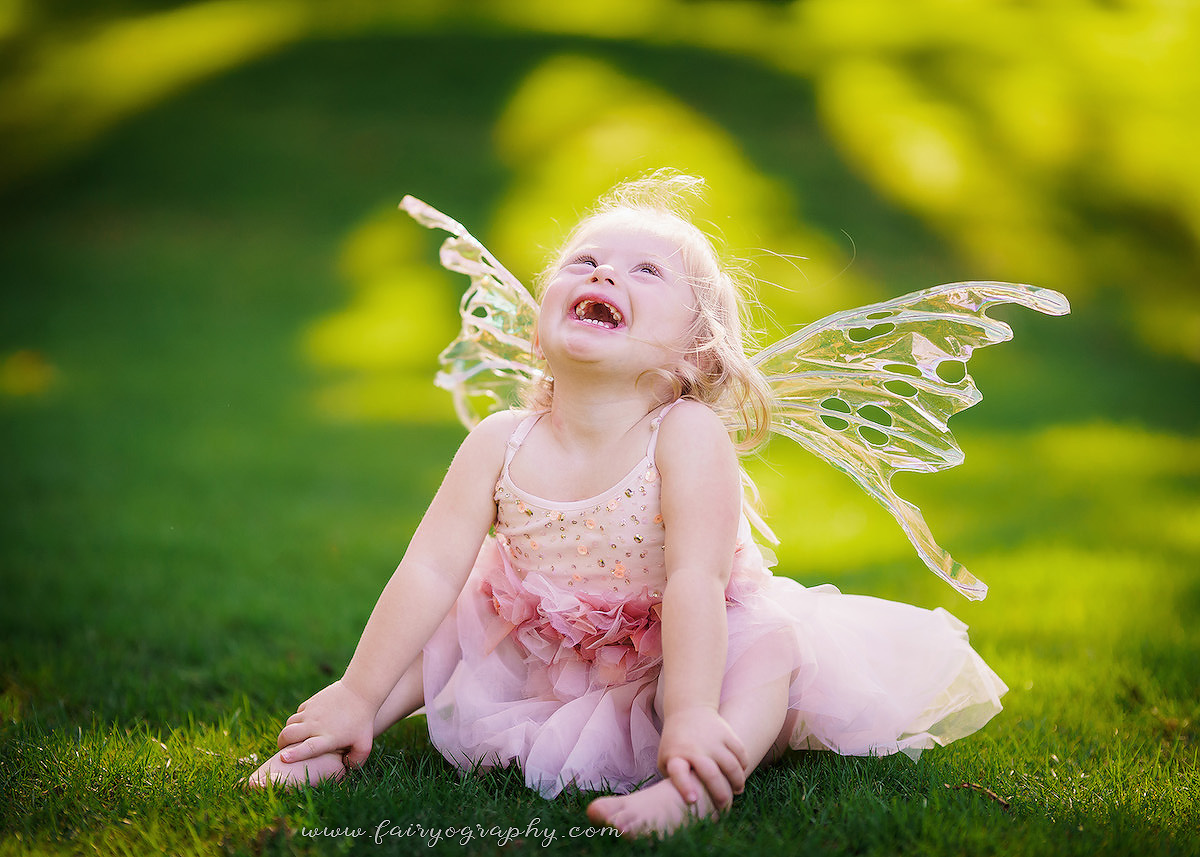
Another fairy with Down syndrome. Down syndrome tends to cause low muscle tone, which leads to these kids often needing ankle braces inside their shoes to help them stand up. Her mom accidentally dropped one in the driveway while packing up for this shoot, so we carried her around for the whole session. The above shot was one of the last of the evening and she was already pretty done with me by this point. I put her in the grass under a tree and I wanted to make sure the shadows were as blurry as possible to keep distractions down in the final image, so I picked the 105mm and used it wide open at F1.4. Her daddy was coming to tickle her and she threw back her head in a huge laugh. Even though it doesn’t really show her face well (I got others that did), this is my favorite image of the night because of the wild abandon and joy in this photo.

This special lady is very close to my heart. She’s one of the reasons I do what I do. She has Leigh’s mitochondrial disease. Mitochondrial diseases are genetic disorders that keeps the body from converting fat to energy, but Leigh’s is more severe than most other cases. In severe cases, these babies live to about two years old. In less severe cases, they make it to around age seven-ish. It’s exceedingly rare that Leigh’s syndrome children make it to teenage years. She is six years old now. I loved meeting this girl. She has a high, pixie voice and a sassy attitude. Her future is uncertain, but I am so glad to have been brightened by her little self. I hope her coming years are as bright and shining as she is.
I wanted to focus on her face but let the rest of the photo fade out a little. So I put her into the grape vines a little to frame her in the photo, then used my 105mm to make sure she was in focus at F1.4, but that the rest of the image was soft and dreamy.
135mm F1.8 DG HSM | Art

This little girl has scoliosis, which means that her spine curves to the side naturally. She’s had many surgeries to correct this, which are very painful. She is very self-conscious about her back and her scars, so the session was a way for her to feel like a princess for once. She told me she’s often bullied for how she looks, stands, and moves.
I chose the 135mm lens to deemphasize what’s going on behind her. Because of the way she stands, she tends to lean forward a little bit. I didn’t want to make her look like she was hunching over. The 135mm compression fixes that issue a little bit.
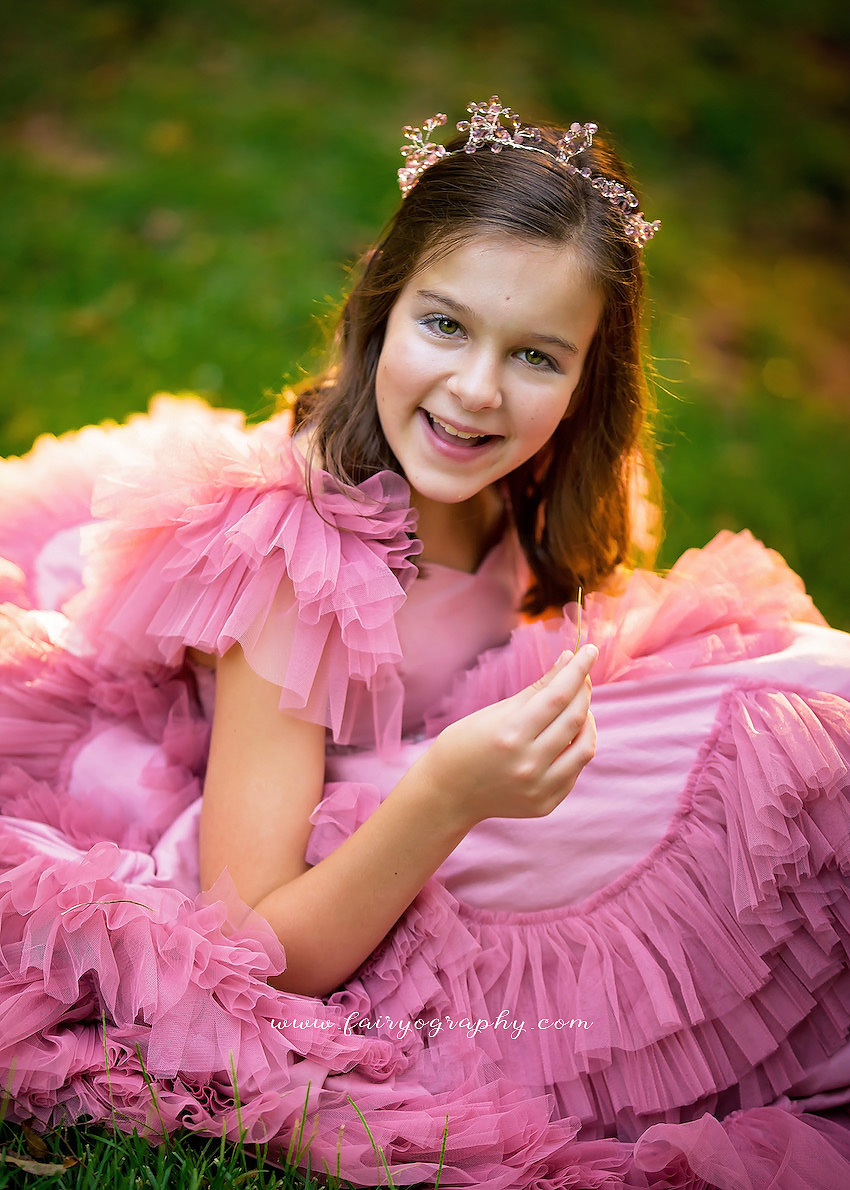
This sweetheart has autism. She is also very hard of hearing, which makes photography for her very challenging. I actually had to wear a device that amplified my voice and transmitted it to her hearing aids.
I actually took this image before I owned the 105 mm, and I wish I had been able to get closer at the time, because of her near deafness. Despite wearing the transmitter device, I think I might have been out of range, or we ran out of batteries or something, because I practically had to yell at her from this distance. But, it all worked out and we were happily singing a song together for this image.
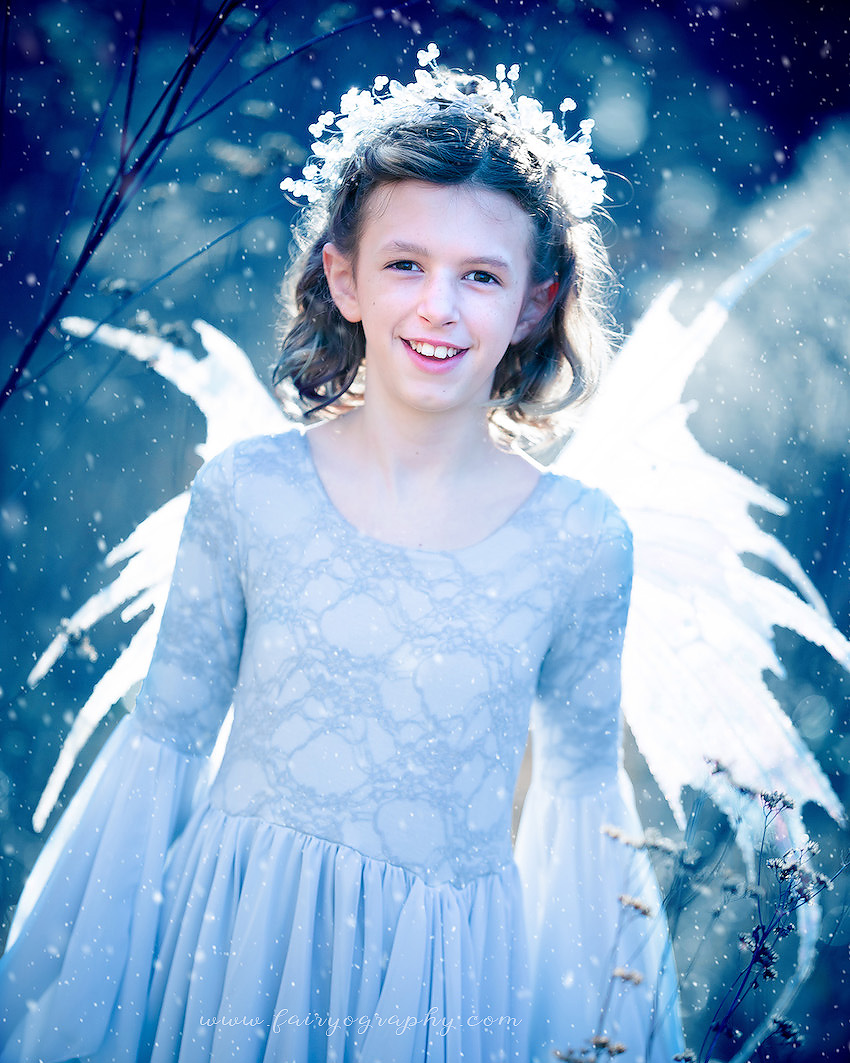
She has a speech issue and a few delays. She’s usually slow to answer and speak. Also, her body doesn’t always cooperate with her mind. But she’s hilarious. During this session, I told her, “Please go stand over there, and don’t trip and fall on your face stepping over that log.” So without saying anything, she walks over to the log, and then pretends to trip over the log, scaring the crap out of me… and then she turned around to watch my face as I realized she wasn’t actually falling.
In order to give her room, and make sure that she wasn’t actually falling over my big feet, I used the 135mm for this shot and the majority of her session. I could back up and get a full body photo of her walking toward me without having to worry about her literally tripping over me.
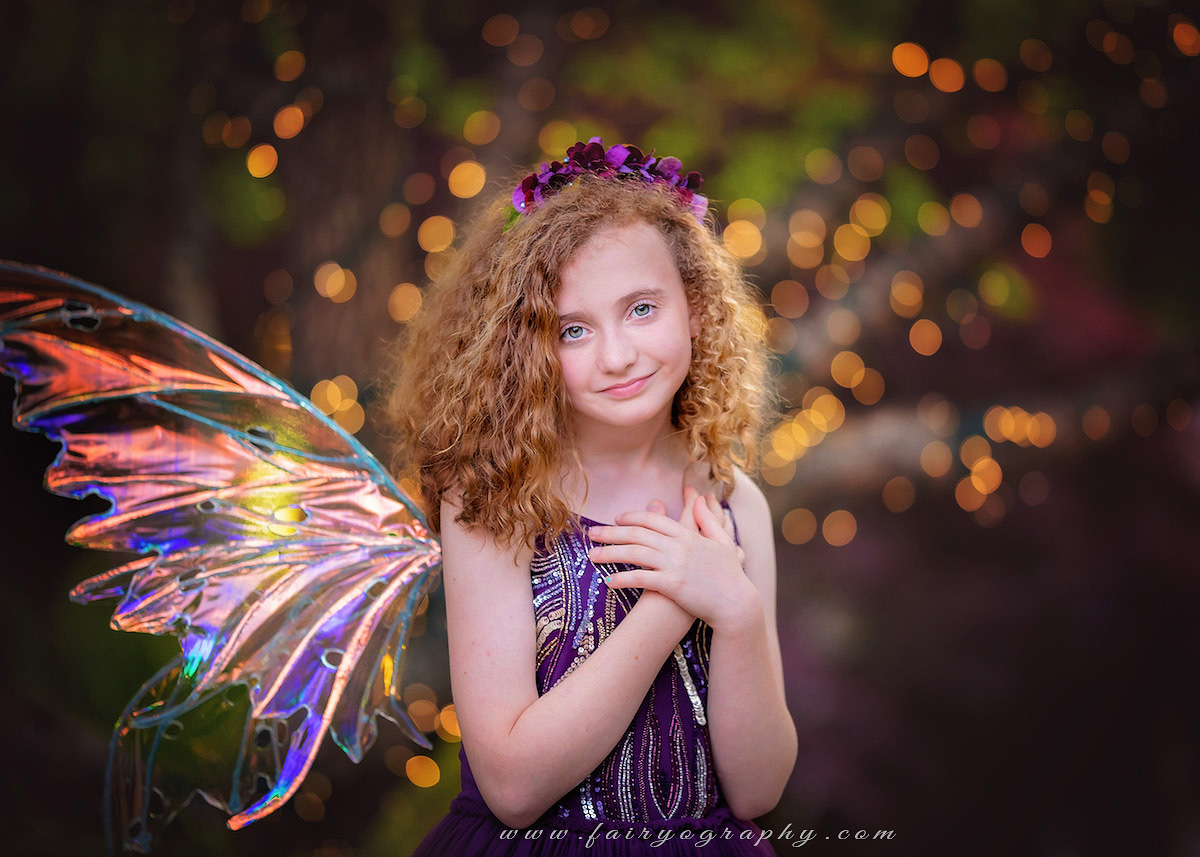
This girl also has scoliosis. She loves her scars, though, and feels that she is a warrior. For her, this session wasn’t a way to feel beautiful or to feel strong, it was just for her to have some time for herself. She’s often surrounded by family or doctors, and to simply be the star of the show without being in pain was what she wanted. At one point in this session, we were talking about animals and eventually got around to dolphins. I said that dolphins were porpoises; she said they were not. I bet her ice cream if I was right. I looked it up… then took them all for ice cream after the session.
This image was the last shot of the night, and I wanted to create something sparkly. There was a tree decorated with fairy lights on it, so I put her in front of it and picked up the 135mm to make the background sparkles turn into fuzzier bokeh. Since she has zero mental considerations to think about, this session was treated as a regular portrait session.
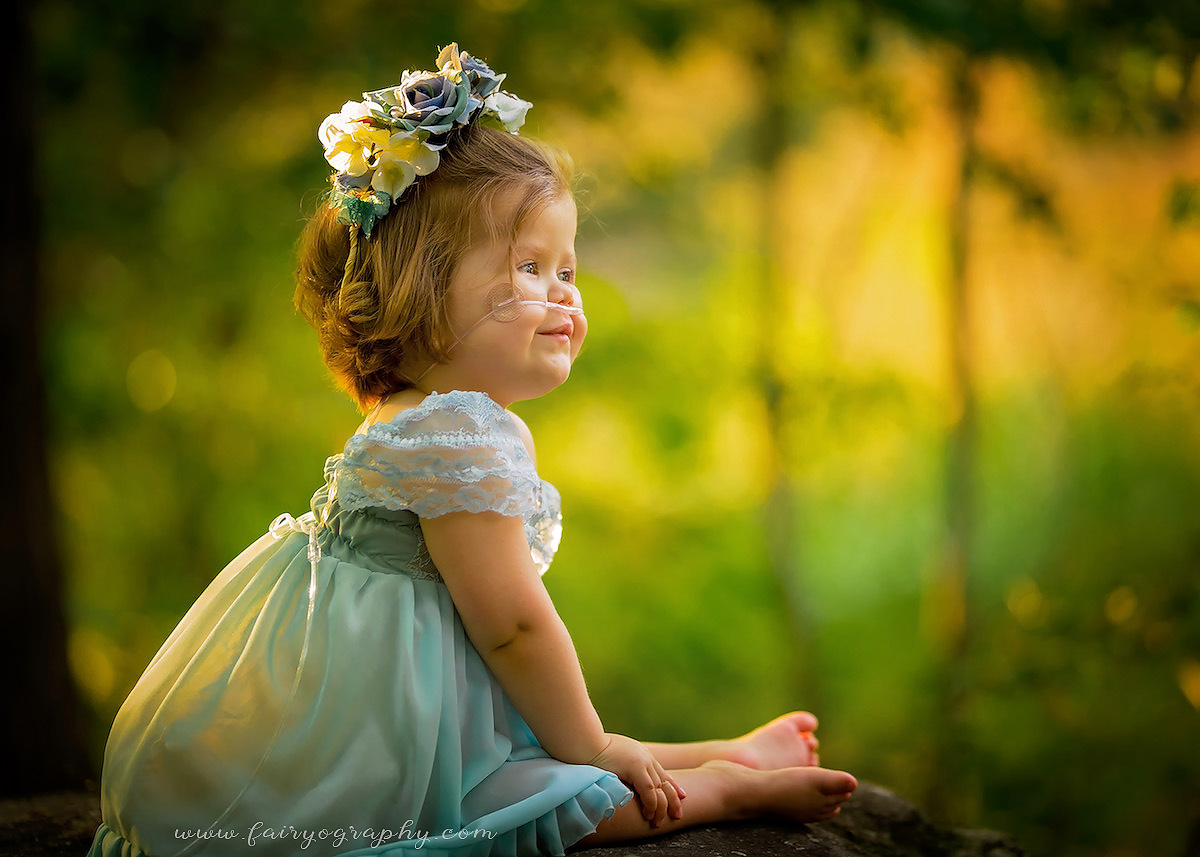
This sweetie has a rare, severe cardiac condition called Pulmonary Vein Stenosis. Her particular kind is called Congenital Pulmonary Vein Stenosis, meaning she was born with it. It has an 80% mortality rate. She had open heart surgery at three months old and over 10 heart catheterizations. There is no cure for this condition. Oftentimes it leads to a double lung transplant. In addition, she has a duplication of a portion of her Chromosome 2. This leads to further delays in physical development, as well as speech. She is non-verbal and on oxygen 24/7.
Her mom and I discussed whether or not we would take off her oxygen tube for just a few shots, and ultimately decided against it because it’s part of her and who she is right now. For this image, we were in an area where the surrounding trees added a lot of shade but were also quite close to her. I wanted to separate her from the background as much as possible, so I used the 135mm for its compression. She was watching some sort of cartoon show on her mom’s phone so that I could get her to look away from me.
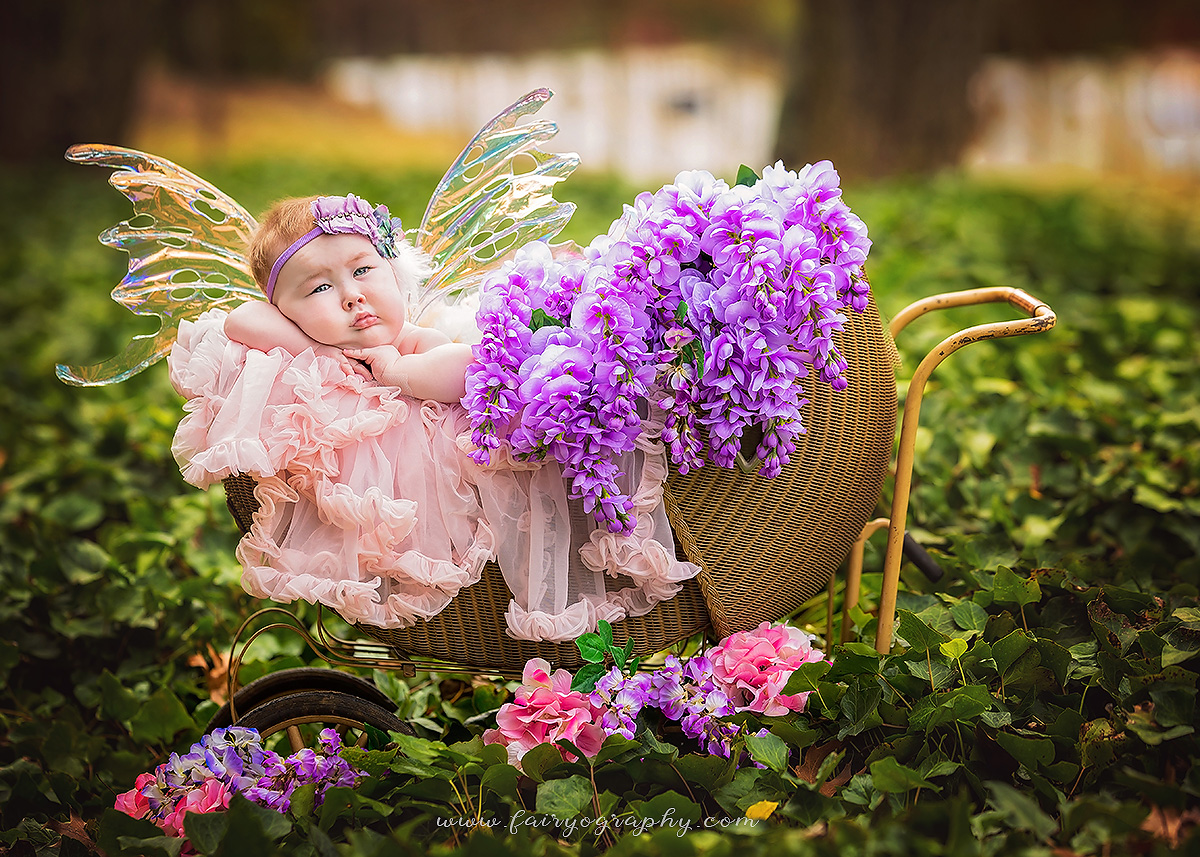
This girl is another one of the reasons I do what I do. I was actually called by her TICU nurse, and this session took place at Scottish Rite Hospital in Atlanta because they knew she would not get to go home. She had Spinal Muscular Atrophy. It means that the muscles and spine don’t communicate well due to a missing protein in the body. As a result, the muscles stop getting signals to move, which causes them to be weaker over time and eventually quit working all together. Sadly, your lungs and heart are muscles too, and they get weaker as well. For a baby her age being affected by it, it is usually fatal. She passed a week after these photos were taken.
This session was very restricted with what we could and could not do, and how far from the nurses we could be. Since she had no muscle control at all, I decided that the best option would be to treat her like a very large newborn. I brought a carriage with me, wheeled her into a small section of ivy on a hill by the road, and propped her up in the carriage. Her mother was on one side of her, her dad on the other, just out of frame. Her nurse was right behind me, watching her breathing and ready to grab her if she looked medically distressed. I chose the 135mm for this because I knew I’d have to blur as much of the background as possible to even have a chance at making a parking lot ivy hill magical. I also knew that I’d only get about five minutes in this area with this setup due to her lungs. I set up everything, took a few test shots before we began with her, and still had to edit out the cars on the road in the background because we had such a limited amount of time. My 135mm was the lens that I knew would be 100% in focus and I could scramble back and forth without having to worry about lens errors. If the 105mm had been available at the time, I probably would have used it instead to remain closer to her.

After many scary seizures, this lovely lady was diagnosed with Panayiotopoulos Syndrome. It’s a nasty little syndrome that includes behavioral issues, digestive problems and big, big seizures. She is at high risk of SUDEP (Sudden Unexplained Death in Epilepsy) because of her variance of seizure types and the days when she goes into status (any seizure over five minutes damages the brain… hers can last up to a full day.).
The two things she asked from me were a rainbow dress and a unicorn. The unicorn I knew I could get, but the rainbow dress I had to borrow from another photographer friend! This was taken in October when the light was beginning to get a bit strong, so I picked the 135mm lens for this shot to make sure I got the least amount of specular highlights on the leaves as I could. The light is nice and golden but still blurry thanks to the lens and the compression it provides.
Wider Angle Lenses
I don’t tend to use a lot of wide-angle lenses for portraits, but occasionally, I do want to show more of the scenery, I can’t back up far enough in the location I’ve chosen, or I want to do an overhead photo of a girl laying down.

An overhead shot of a full body is impossible with a telephoto lens, and this image is definitely an example of that. With a 45mm focal length, I was able to stand on a short ladder with her on the ground and get the full tail in the photo.

This tiny girl was diagnosed with lymphatic malformations in her bilateral upper extremities, pelvis and chest wall. She also has malformations to the fingers and toes on both hands and one foot. Not only will these malformations require numerous surgeries in her future, but they will also require both specialized clothing and shoes as she continues to grow. She was born prematurely at almost 32 weeks. She weighed 8 pounds, 7 ounces. Of this weight, 3.3 pounds were attributed to the masses that this tiny girl was born with. They’re not cancerous, but they do cause abnormal growth and hinder her mobility.
I wanted an overhead shot of her for variety since she can’t walk (and doesn’t like to stand much) on her own. I put her underneath a Camellia bush with the dropping pink petals, then shook the tree above her so she would be distracted as the petals fell. The 45mm focal length was perfect for this image, allowing me to keep her attention on me and get the petals in the photo.

This lovely lady has Williams syndrome or WS (also called “Pixie-ism”), a chromosome deletion which includes developmental delays, cortical visual impairment, heart and vascular issues, and the inability to make the protein elastin (this is a protein responsible for making our arteries, veins, cartilage and tendons flexible). It is a genetic condition that is present at birth and can affect anyone. WS people are often developmentally delayed but have a great musical affinity.
Her mother says, “She does not understand hatred or evil-hearted people. It’s part of her, in her genetics. She can only understand other people through love and beauty. Music is her language. It’s how she can relate and document the amazing stories in her head. She shares herself openly, readily, not understanding others’ hesitation or fear of the unknown. She feels deeply, and this is both her greatest weakness and strength. She struggles with small things we take for granted — buttons, switches — but she is brilliant when it comes to bringing out the best in everyone around her.”
I picked a 50mm macro lens for her because I wanted to be close to her and make her feel larger than life, and I wanted to make sure her eyes were sharp and engaged. The lens distortion from being so close makes her look even more like a pixie and draws all the attention of the viewer right to her sparkling eyes.

This tiny girl was born with Pierre Robin sequence, a syndrome that causes the jaw to not develop normally in line with the rest of the baby’s growth. As a result, she was born with a tiny jaw that made it impossible for her to feed, hard for her to breathe, and required several surgeries to fix.
I wanted to give a sense of size in this image. This girl is wearing a doll’s dress in this photo. She was 18 months old here, but the size of a 6-month-old baby. She was walking and talking, just TINY! I wanted to emphasize the “little girl in a big forest” feeling, so I popped on my 50mm lens to get as much of the woods as I could.

This little girl has a rare chromosomal deletion, 13q 13.2-14.11. It has manifested in many ways for her: Microcephally (small head), scoliosis, seizures, hypotonic cerebral palsy (which means low muscle tone), a poor immune system, severe eczema, allergies, she is legally blind, Guillian-Barre syndrome, a severe sensory integration disorder, and moderate to severe hearing loss.
Since this sweetie is non-verbal and has a hard time hearing or seeing, I knew that in order to get the best interaction and expressions, I needed to be pretty close to her. I picked the 50mm macro lens for most of the session so I could stay close and be sure to catch her zipping around in her wheelchair. The biggest smile I got was right after I jumped out of the way to keep her from running me over. She thought my yelp was pretty funny, and she was a terror in that chair.
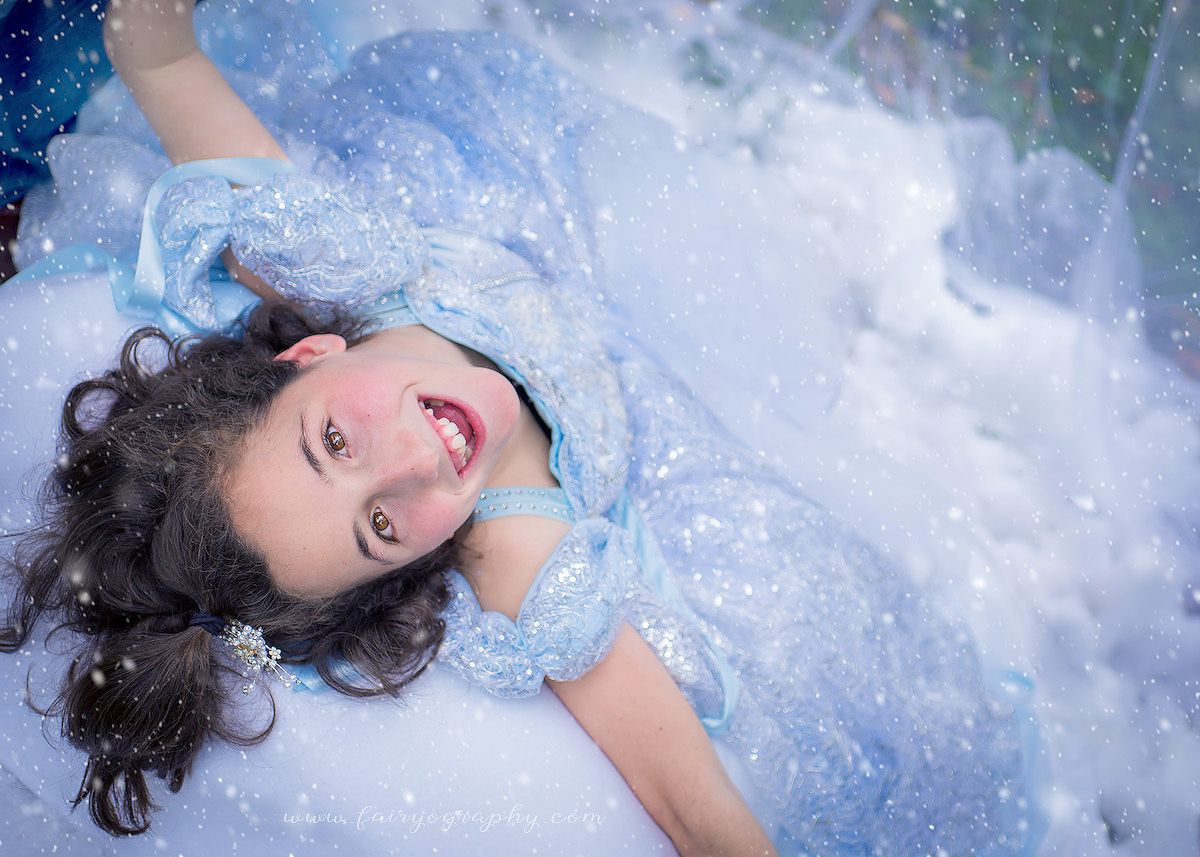
This girl lives with severe cerebral palsy and dystonia caused by kernicterus. When she was a newborn, her bilirubin levels rose too high causing brain damage. Now she is wheelchair bound and cannot speak because all her muscles are clenched so tightly, among many other things. Basically she’s a completely normal teenager stuck in a body that doesn’t obey her. She can stick out her tongue for a ‘yes’ answer if you ask her a direct question, but that’s about it on the level of body control she has. Despite this, she’s utterly hilarious. At the time of our session, she was re-reading the Percy Jackson novels, and her ideal boyfriend was Anubis. That’s right… the Egyptian god of the dead. We all laughed our butts off for about an hour and a half!
I went into this session worried about what I was going to get. Since she has zero muscle control, I knew I wouldn’t be able to photograph her in a ton of places. So I built a little canopy arbor for her in an orchard with low trees, and I had a wedge to help keep her head off the ground. We did several shots in her wheelchair as well, but this ended up being my favorite. I picked a 50mm lens for this one because her condition causes her to curl up if she’s focusing too hard on something. If I was closer and using a more sedate voice, it was easier for her to stay relaxed. Mom and Dad are on either side of her, just out of frame, keeping her from rolling away if she curls up. The macro lens allowed me to focus on her eyes and face while getting the rest of the blur and falloff, keeping the final image from being too busy.
Why I Keep Doing What I Do
To me, the most important part of the whole program is showing (and realizing myself) that these children are not their diagnosis. They are normal children. They laugh, they get mad, they cry, they have big emotions just like any kid. Each of these kids is so much more than just the medical text. Their diagnosis changes everything for these families, but it isn’t the whole story for them. Each family sees right past that diagnosis to their own special unique child.
For more information about Memorial Princess Sessions, please visit Fairyography.com.
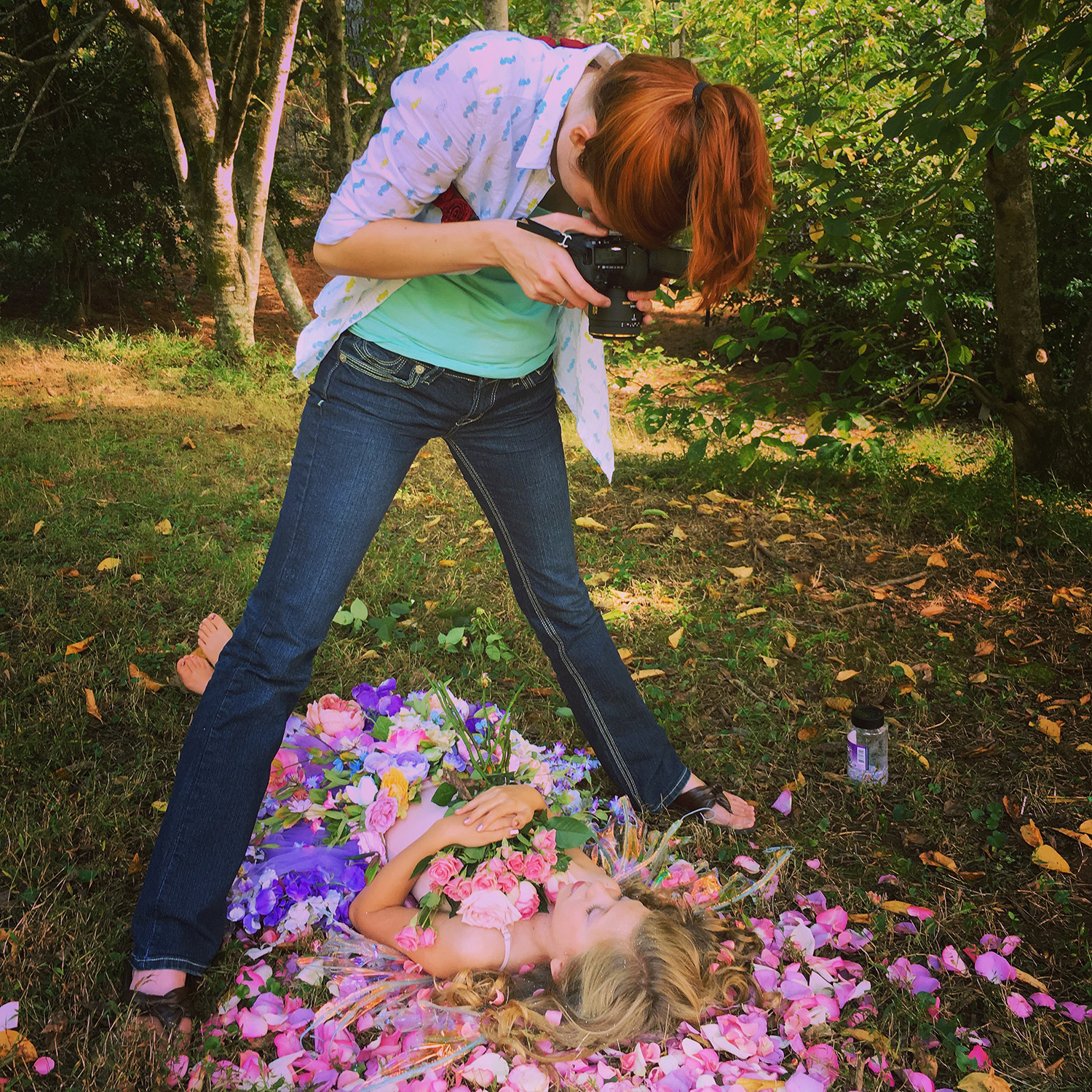
NOTE: The parents and/or guardians of the children featured in this article have agreed to share their stories with Ms. Larkin and SIGMA.

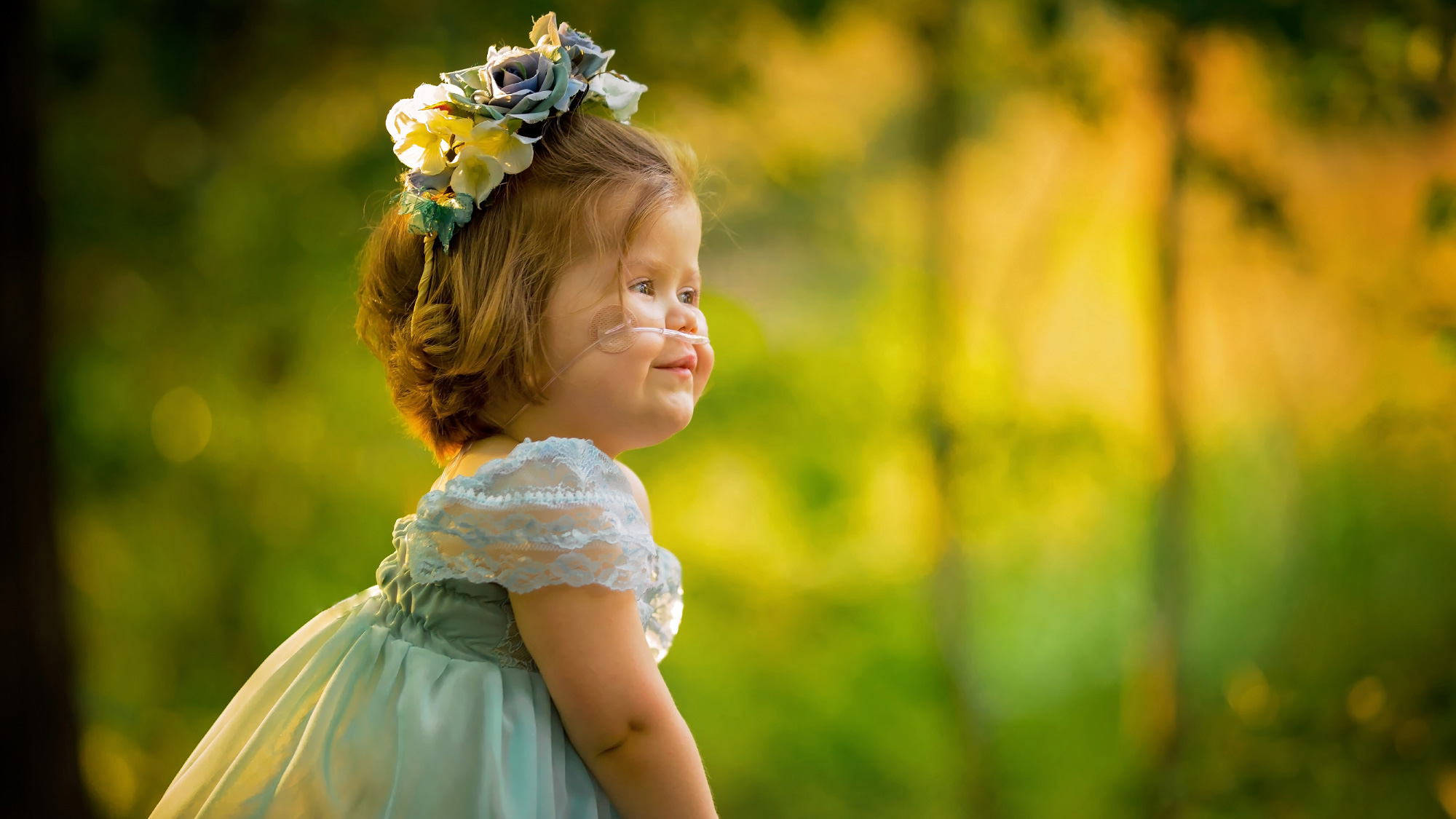
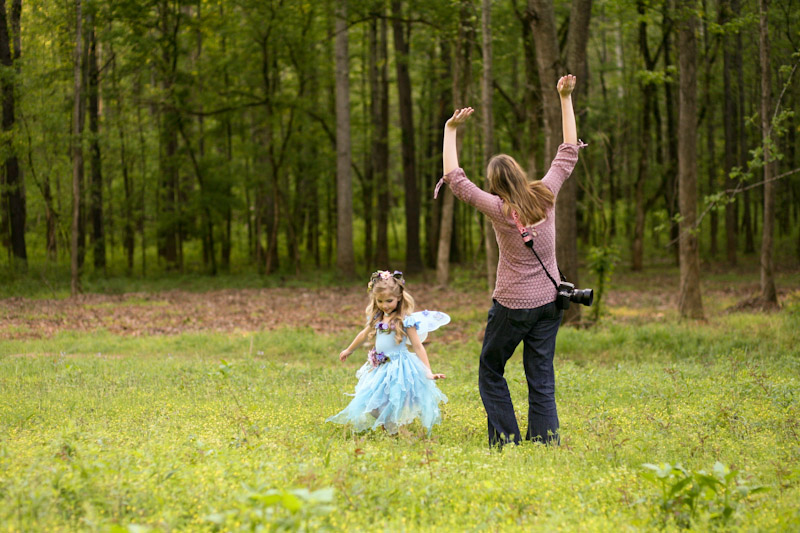

Wow what a post. Beautiful photos and what an amazing experience for the families and something for them to treasure forever. I’ve posed before on my business page asking for families but didn’t have much interaction. Any advice on how to start something like this? I would like to photograph boys and girls.
Sasha, Heather here! For me, the project really began to take off in the community when I had a story run by the local newspaper on the event. I contacted them and asked for someone in community stories and asked for a press release, they opted to make it a bigger story. I also make sure to run the event at the same time every year so people know when to expect it as well. Good luck!
Wow, what a beautiful human you are for creating these gorgeous images for these special girls and their families! So inspiring! Thank you for sharing!
Thank you.
The images are amazing … as are you, Heather!! Keep doing it right!! <3